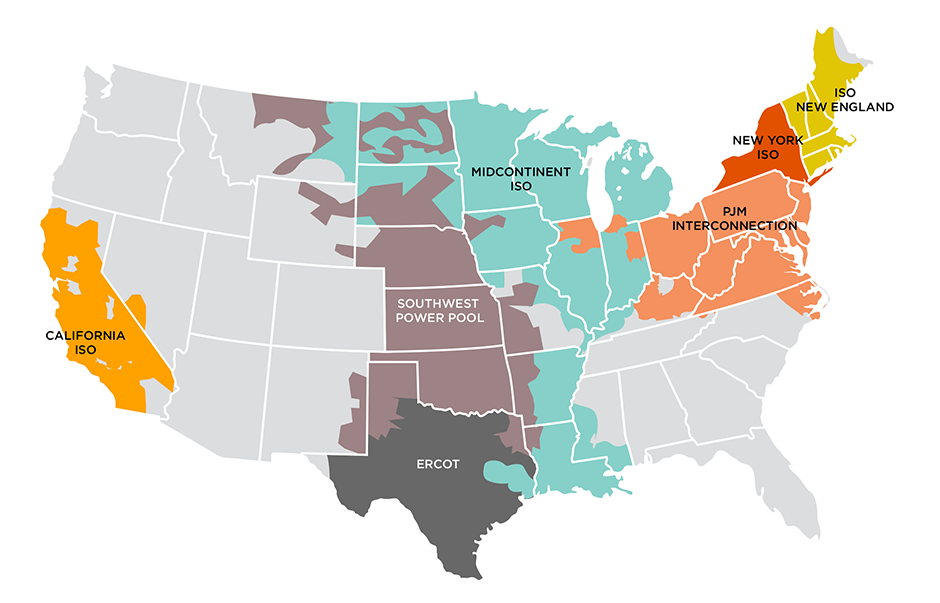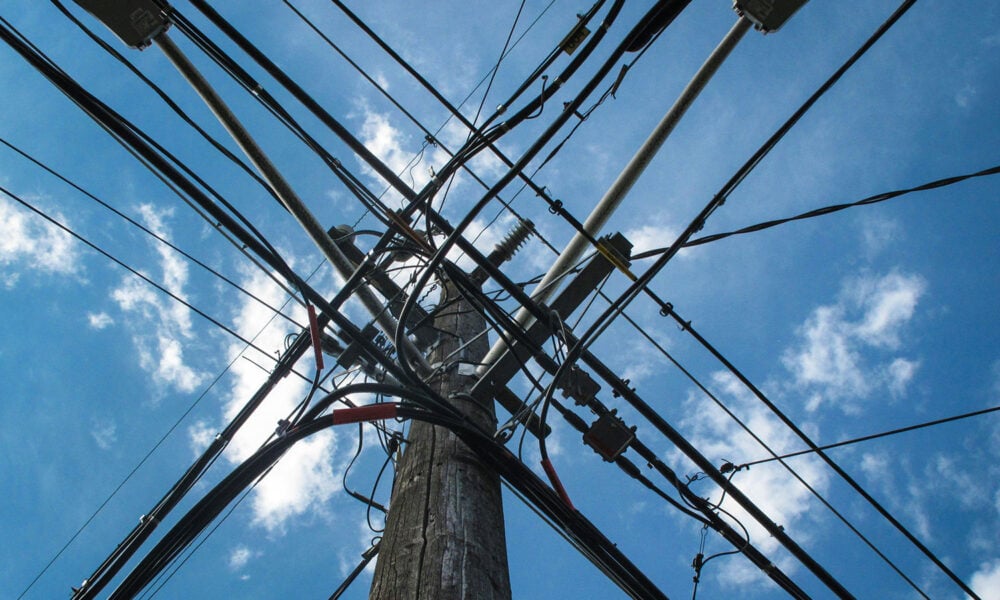Big changes are brewing for the western power grid, and today marked a significant occasion.
Earlier today, the Launch Committee of the West-Wide Governance Pathways Initiative voted to approve its proposal for independent governance of western energy markets.
Now, if you’re wondering what the Pathways Initiative is, what the governance proposal is all about, and why any of this even matters, then you’re in the right place. I’ll answer all those questions and more. But first, some important context.
What’s the problem with the western grid?
Taking a step back, the western grid is organized very differently from the eastern grid. For the most part, the eastern grid has consolidated into a handful of large balancing authorities, many of which are independent system operators (ISOs) or regional transmission organizations (RTOs). ISOs and RTOs perform many functions, but the short version is that they are like air traffic controllers for the power grid: they manage electricity markets and control the flow of electricity on the transmission system. Overall, they help the grid function more efficiently.
But in contrast to the eastern grid with its many ISOs and RTOs, the United States western grid has only one: the California ISO (CAISO), along with a bunch of smaller balancing authorities (38 to be exact).
And therein lies the root of the problem.
Because the western grid is so fragmented, it’s more difficult to maintain grid reliability during extreme weather events, it’s more complicated to build transmission lines that cross multiple balancing authorities, it’s more expensive to meet electricity demand without organized energy markets, and it’s more challenging for states to transition quickly to clean electricity. More collaboration on the western grid could help address those problems.

How much progress has been made on western grid collaboration?
Fortunately, there’s already a strong foundation for western grid collaboration. Since 2014, CAISO has been operating a voluntary western real-time energy market, called the Western Energy Imbalance Market (WEIM). The market has grown over time to cover the vast majority of the West, and it now includes participants that together serve nearly 80% of electricity demand in the West. With this wide-spread participation, the market has produced over $6 billion in benefits since it began operating in 2014.
However, the WEIM really only scratches the surface. Because it’s limited to a real-time energy market, the WEIM can only yield a small portion of all the benefits that could be realized from further western grid collaboration. To that end, the CAISO has been working to establish the Extended Day-Ahead Market (EDAM), which would be used to meet a much larger portion of western electricity demand more efficiently. The EDAM will begin operations in 2026, and it has the potential to save its participants more than $1 billion per year.
But there’s a twist.
CAISO’s western energy markets aren’t the only ones on offer. The Southwest Power Pool (SPP), an RTO operating in the central United States, has begun offering energy market services to western utilities as well. SPP began operating its western real-time energy market in 2021, and it’s also developing a western day-ahead energy market.
Many utilities in the west are seriously considering these SPP-run alternatives for one key reason: governance. The problem that many utilities see with CAISO’s western energy markets is that the CAISO Board of Governors is not completely independent because board members are appointed by the governor of California and confirmed by the California state senate. While there is a separate Governing Body that was created to govern CAISO’s western energy markets, decisions can still be influenced by CAISO’s Board of Governors.
With the specter of California control over western energy markets, utilities are considering joining the SPP alternatives. But the problem is that, if the West splits into multiple energy markets, the benefits of western grid collaboration could be substantially reduced.
And that’s where the Pathways Initiative comes in.
What’s the Pathways Initiative?
The West-Wide Governance Pathways Initiative started in July 2023 with a group of western utility regulators who suggested a new pathway towards independent governance of western electricity markets. The idea they pitched was to create an entirely new, independently governed, regional organization. This new regional organization could assume control of CAISO’s energy markets, and it could eventually offer additional grid services beyond that (e.g., a resource adequacy program or transmission planning). With this approach, the West could continue to build on the success of and the widespread participation in CAISO’s energy markets while transitioning to an independent governance structure that many utilities have desired.
At that point, this was just an idea. But a group of volunteers came together to form the “Launch Committee” to flesh out the details. With volunteers from many sectors and states across the West (myself included!), the Launch Committee set out to create a plan.
What’s the governance proposal all about?
The Pathways Initiative governance proposal (aka the Step 2 Proposal) was approved today. The proposal is focused on laying the foundation for the vision articulated by western utility regulators in their letter that initiated the Pathways Initiative. The proposal fills in most of the details needed to create a new, independent, regional organization that could assume control of CAISO’s western energy markets and eventually offer additional grid services beyond that. The proposal includes recommendations on how to set up the regional organization, how it should be governed, how the organization would interact with CAISO, how its stakeholder engagement processes should be structured, and how the public interest could be protected.
It’s a long proposal, and if you feel like perusing all 122 pages (plus appendices!), good on you. But I’ll highlight two pieces that I think are particularly important.
First, as my UCS colleagues have noted, having an inclusive and balanced stakeholder process is critical for success. This has been an issue in some eastern RTOs, such as PJM, where the stakeholder process is relatively exclusive and dominated by incumbent stakeholders. But the Pathways Initiative proposal takes a far better approach. The proposed stakeholder process for the new regional organization includes a broader list of sectors than most other RTOs. And most critically, while the proposal does include mechanisms for stakeholders to vote, voting is simply advisory. So stakeholders won’t have any formal decision-making power, and outcomes won’t necessarily be dictated by the most powerful stakeholders. Instead, decision-making power rests with the regional organization’s independent board, which will be nominated by a representative group of stakeholders and approved by the board.
Second, the proposal includes a variety of mechanisms to protect the public interest. In addition to a continued role for state utility regulators to help ensure the regional organization respects state energy policy (another element that’s critical for success), the proposal includes elements to strengthen consumer advocacy and public participation. The proposal recommends creating a new consumer advocacy organization to ensure state consumer advocates have the resources to engage in policymaking at the regional organization. And the proposal also recommends the creation of an office of public participation, which, similar to FERC’s office, could serve a critical role in fostering stakeholder engagement, especially with stakeholders that have fewer resources.
There’s a lot more I could say about the proposal, and there are many other details that still need to be worked out. (And UCS’s Equitable Grid Principles will be particularly helpful when developing those details, including accessibility measures, engagement with tribes, etc.) But overall, the proposal lays the groundwork for a regional organization that will prioritize the public interest and avoid some of the pitfalls experienced at similar organizations.
What are the next steps?
One of the critical caveats of the Pathways Initiative governance proposal is that California will need to pass legislation to allow the proposal to come to life. Ideally that will happen during the 2025 legislative session, which starts next month and ends on September 12, 2025. So that’s the most important next step.
California has previously considered grid regionalization bills on numerous occasions, and those bills never made it through the legislature. But this time is completely different.
Past “grid regionalization” bills focused on revamping CAISO’s governance to make the CAISO Board of Governors completely independent (i.e., not appointed by California’s governor and confirmed by the senate). The idea was that CAISO could then expand its operations throughout the West to utilities that would be more willing to join an independently-governed CAISO. Without going into the details, the past approach had many opponents, some of whom are now ardent supporters of the new Pathways Initiative approach.
Now, the bill that the California legislature would need to pass to enable the Pathways Initiative proposal will be much narrower. Instead of making wholesale changes to CAISO governance, California will simply need to change statute to permit the CAISO to transfer authority over western energy markets to the new regional organization. CAISO governance, along with its balancing authority area, will remain intact.
While it’s never easy to pass legislation, with a narrower statutory change and a broader coalition of supporters, I’m hopeful that such a bill would make it through the California legislative process.
Assuming a bill does pass, the next steps after that would likely be the Launch Committee filing the paperwork to establish the regional organization and seating the initial board. Then, once the organization is up and running, CAISO could transfer authority over its energy markets to the regional organization.

How would these changes help?
Lastly, it’s important to recognize why these changes are so important and how they would help. At the end of the day, it all boils down to three main benefits: easing the transition to clean electricity, bolstering grid reliability, and reducing grid costs.
In the near term, preserving one big western energy market (by keeping the vast majority of utilities in CAISO’s western energy markets) will maximize those three categories of benefits. For example, there will be less renewable energy curtailment, more efficient dispatch of generation to meet electricity demand, and lower costs to meet grid reliability requirements.
In the long term, the benefits could be even greater. Once the new regional organization is up and running, it could expand its offerings to include other grid services. To take just one example, coordinated transmission planning across the West could be a huge help in the transition to clean energy, more effectively facilitating the buildout of transmission lines from the best renewable resources in the West to the places with the highest electricity demand.
At this point, there is no silver bullet that will single-handedly usher in an affordable and reliable transition to clean energy. Instead, we need a wide array of solutions that, taken together, will advance the transition.
This is one of them.

